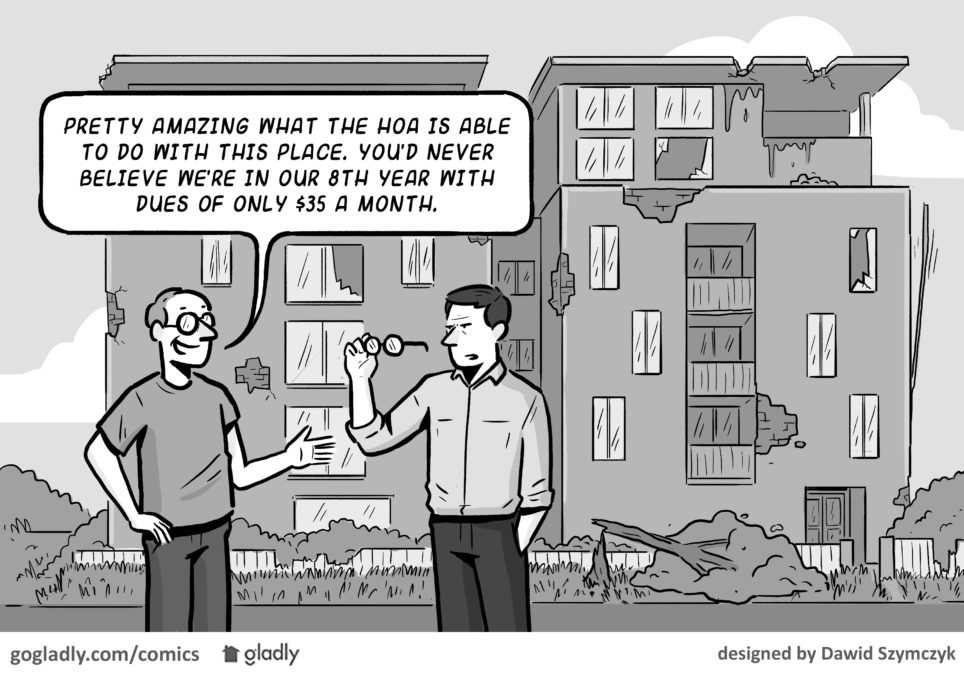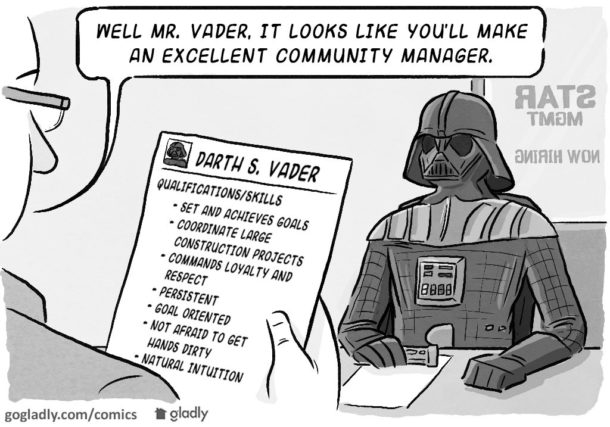Assessments can be a big determining factor for people looking at buying a property in an Association. The amount charged can vary drastically from one HOA to another, and because people often look at the dollar amount and not the whole picture, you might fear shooting yourself in the foot with assessments that are too high. But what does a lower fee really mean for your community and anyone who lives there now and in the future?
Anatomy of HOA Assessments
To know how lower fees might affect your community, you must understand what makes up the assessment. Normally a budget is done annually, predicting what the HOA will be paying for different expenses. You can then decide how much each owner will need to pay based on what those costs are predicted to be. Then you look at the cost of future repairs / replacement of common elements (typically found in a reserve study), and how much must be set aside annually to prepare for those costs. Many would argue — and wisely so — that you should also build in a cushion for unforeseen expenses, such as an extra heavy snow season, extra dry summer, unexpected sprinkler issues, or anything else requiring abnormal costs to be incurred.
There are two other methods I have found for coming up with the assessment fee to be charged. I call them either the “what sells” or “what can we afford” methods. Both methods involve coming up with a dollar amount to charge first, and then figuring out what the HOA can afford to fix, repair, or replace based on that revenue.
What Sells
The “what sells” method is done by builders or developers — or at least is pushed on the management company by the party trying to sell the units. The salespeople look at what they are wanting to sell units for and what the target market can handle. Higher assessments can mean lower sales prices, and lower assessments can allow potential buyers to be able to afford a higher purchase price. They can get away with this due to the potential revenue from fees such as reinvestment or transfer fees, depending on what they are called in your state. As an example, a fairly typical reinvestment fee is around .5% of the sales price. Normally, this goes straight into reserves. If you charge this up front on the sale of all units, then the HOA can quickly get ahead of schedule on funding reserves, and look very healthy even when their budget does not include funding reserves from assessment revenue.
What We Can Afford
The “what can we afford” scenario is done by boards trying to appease the masses. They avoid setting assessments higher than what they believe the owners can fit into their individual budgets — or what they believe they want to pay. Often this happens when there is a high level of ownership living on a fixed income. This is typically where we see HOAs with no budgetary cushion and little to no reserve funding.
So, buyers looking at a new or existing property that has these “bargain assessments” might fairly ask themselves how are they able to charge what they are? What could this mean for the future? Keeping assessments artificially low over time can result in deferred maintenance, the need for big special assessments, and loss of value and curb appeal, and therefore lower marketability of the units. Is it better to pay a little more monthly, or pay much more in a few years? Your answer may depend on which you’d prefer: increasing assessments annually to cover the increasing costs of operating the association, or having large increases in 5, 10, or more years down the road?
Keep in mind that if reserves are not properly funded, then at some point either assessments will be increased, or special assessments will be charged. If “bargain assessments” based on “what we can afford” result in having little or no budgetary cushion, be aware that when unexpected expenses occur, the HOA is likely to need additional funds. Sure, people may complain about the higher costs, but how much will they complain when the community falls into disrepair and they can’t sell their homes, or be proud of where they call home?
Conclusion
An HOA budget is much like your own – either you prepare for the future and have an emergency savings, or you will come to a point when you must pay for things you cannot afford. Reasonable and proper assessment levels allow for predictable expenses for owners, and help eliminate unpleasant surprises. They allow the association to fulfill their primary role of preserving, protecting and enhancing the community.
- Is Your Manager Falling Down on the Job? - August 27, 2019
- Are Bargain HOA Assessments Really a Bargain? - April 10, 2019



 Help
Help
Add the Nextdoor app as a share site. We want to be able to share these with neighbors.